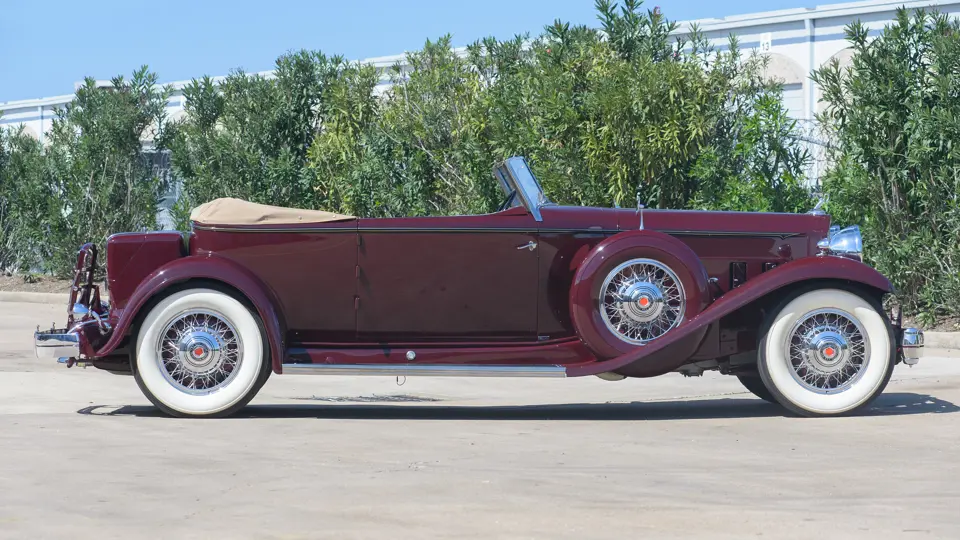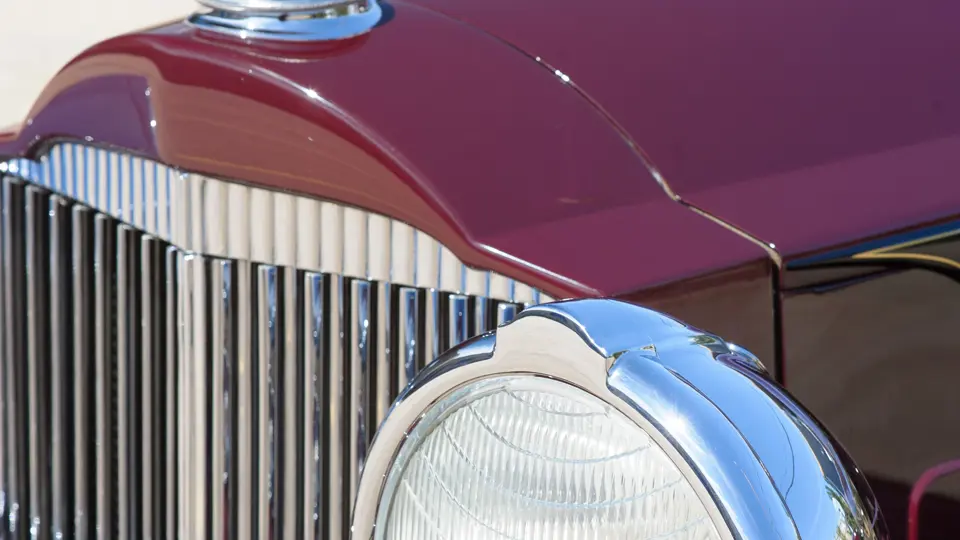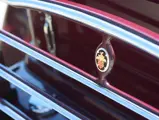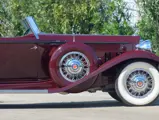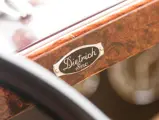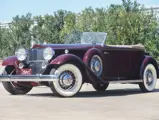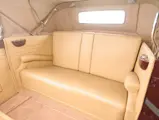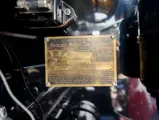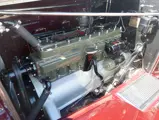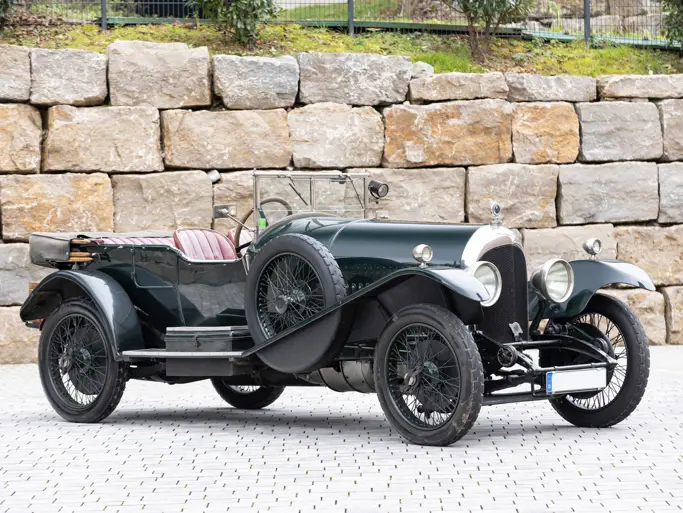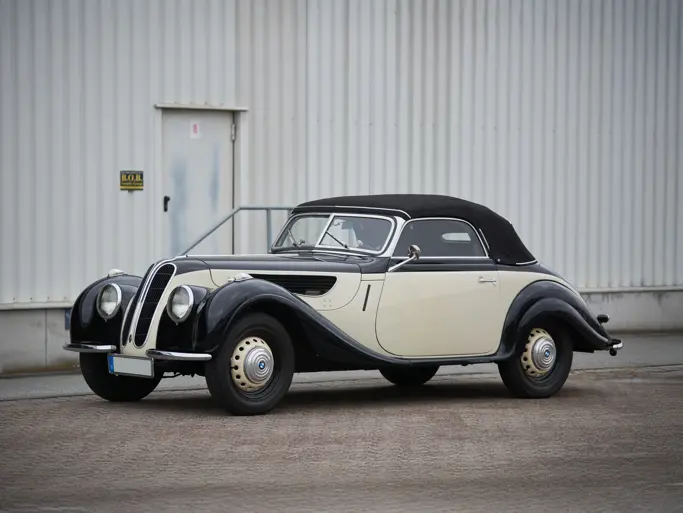Model 904. 135 bhp, 384.8 cu. in. L-head inline eight-cylinder engine, three-speed manual transmission, solid front axle and live rear axle with semi-elliptic leaf springs, and four-wheel mechanical drum brakes. Wheelbase: 147.5 in
Packard’s 1932 line comprised a curious mix. At the bottom was a new lower-priced car, the Model 900 Light Eight. Not much smaller than other Packards, in fact only two inches shorter than a Standard Eight, it was indeed lighter, tipping the scales at 3,930 to 4,115 pounds, compared to the larger car’s 4,317 to 4,735. More importantly, it sold for $1,750 to $1,795, a good $700 less than comparable Standard Eight body styles. Of distinctive appearance, with a unique “shovel nose” radiator grille, it looks attractive even today, but sales were disappointing, with fewer than 7,000 built before production was discontinued at the end of the year. More of a problem than its lackluster popularity was the car’s cost to build. Packard quality had not been skimped on, and $1,750 left scant room for profit, too little to have been made up on volume, even if sales had miraculously improved.
At the upper end, the company brought back the Twin Six but with a wholly new engine designed by Cornelius Van Ranst, whose credits included the Cord L-29. With a narrow, 67-degree vee, it was of unusual configuration, with nearly horizontal valves actuated by hydraulic tappets. The combustion chamber was partially in the block, giving rise to the description “modified L-head.” Displacing 445.5 cubic inches, it developed 160 brake horsepower at 3,200 rpm. The engine was installed in the chassis of the Deluxe Eight, where it was offered with no fewer than 21 body styles and priced from $3,745 to $7,950. Six of these were the work of Dietrich Inc.
Dietrich Inc. was founded in Detroit in 1925. Raymond Dietrich came from Brewster & Co., where he had been an apprentice draftsman. There, he prospered, met Tom Hibbard, and teamed with him in the venture that became LeBaron. After Hibbard left for Paris, and left his partnership with Dutch Darrin, Dietrich was lured to Detroit by Murray Corporation of America’s president, Allen Shelden, acting on the influence of Edsel Ford. When offered 50 percent of a new firm, to be named eponymously, Dietrich sold his LeBaron stake and relocated. Initially working mostly on Lincolns, Dietrich Inc. did some bodies for several Packard agents, which led to a series of three custom show cars that manager Jack Parvis took on a nationwide tour in 1926. At tour’s end, he had 150 orders, which came to the notice of Packard President Alvan Macauley, who ordered 175 more for the company. Thus began a long association of Dietrich with Packard, resulting in hundreds of custom and semi-custom bodies for the marque. Dietrich Inc. became the largest American supplier of non-production bodies in the country; examples won gold awards at Paris and Monte Carlo, and his designs became the talk of the Salon circuit.
What is often forgotten is that Packard’s same Dietrich Individual Custom bodies could be ordered with the Deluxe Eight engine, for $700 less, model for model, where they were called “Individual Custom Eights.” This car is one of those customs, a Style 2072 Convertible Victoria. In contrast to Packard’s own bodies, which generally had switched to forward-hinged front doors, the Dietrich Customs all held to “suicide” doors, hinged from the rear.
The convertible victoria style is particularly associated with Packard. A close-coupled, four-seat convertible with blind rear quarters, the convertible victoria makes up in coziness what it lacks in driver visibility. The late Hugo Pfau, himself a veteran of the coachbuilding industry, illustrates a number of examples in his book, The Coachbuilt Packard. Examples were produced over the years by Hibbard and Darrin, Graber, Waterhouse, and Packard’s own production lines, where they were sourced from Murray. Dietrich’s design is generally acknowledged as the most graceful; in fact, the Murray-built bodies are virtual copies, differing only in detail but built in much greater numbers.
This car’s original cowl plate indicates it was delivered new on September 30, 1931, by LeBoutillier & Dolan, the Bryn Mawr, Pennsylvania, dealer. When purchased by Gene Rouse in the mid-1970s, it had been much modified; the body was sectioned about two inches, with other metal reconfigured to suit, and a number of inappropriate parts were installed. Subsequent owner Jackson Brooks dismantled the car while considering the best way to proceed with a restoration. The matching original engine, number 194200, and chassis, number 194181, were sold to an Oklahoma collector at a point when Brooks was considering transferring the body to a V-12 chassis, which would’ve been allowed by the CCCA rules of the day, but they were ultimately properly reunited with the Dietrich body, number 5468.
The partially restored engine, chassis, and body were turned over to Colorado restorer Mark Clayton. His meticulous work was capped off with the original Packard data plate, vehicle number 904-95. On its first outing, a CCCA national meet in Dallas, it scored 100 points and earned First Junior honors, followed soon by First Senior at Albuquerque, and the car was further honored with a CCCA Senior, medallion number 20075. After a short succession of owners, the car passed to John O’Quinn, from whose estate it is now offered.
Very handsome in deep maroon, it has tan leather upholstery and a tan canvas top. Despite the fact that the restoration is now more than a decade old, it presents very well, with virtually no signs of use or wear. Convertible victorias are among the most prized of Full Classic Packards, with the Dietrich-built cars most of all. This car, with its remarkable rebirth, is in a class of its own.

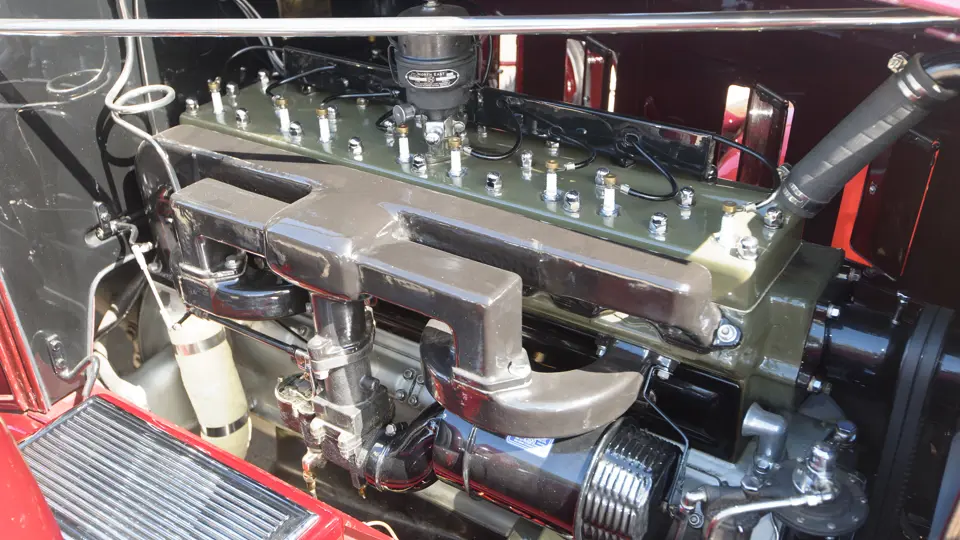



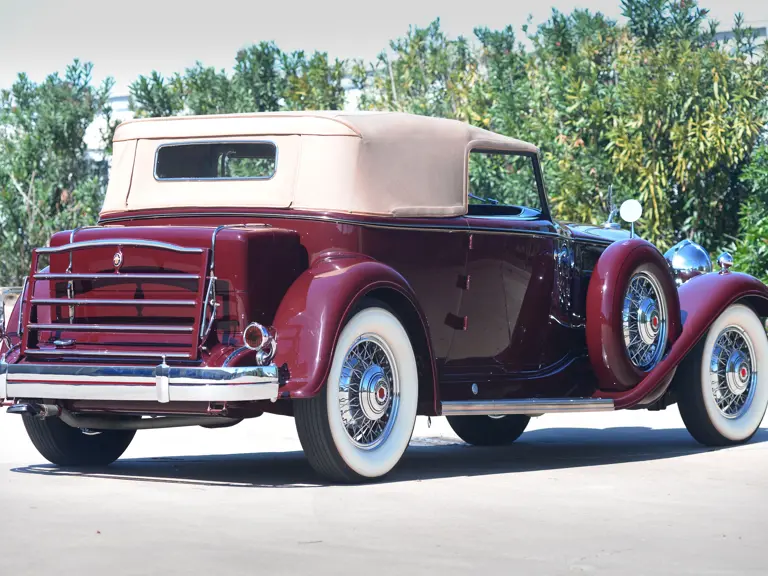
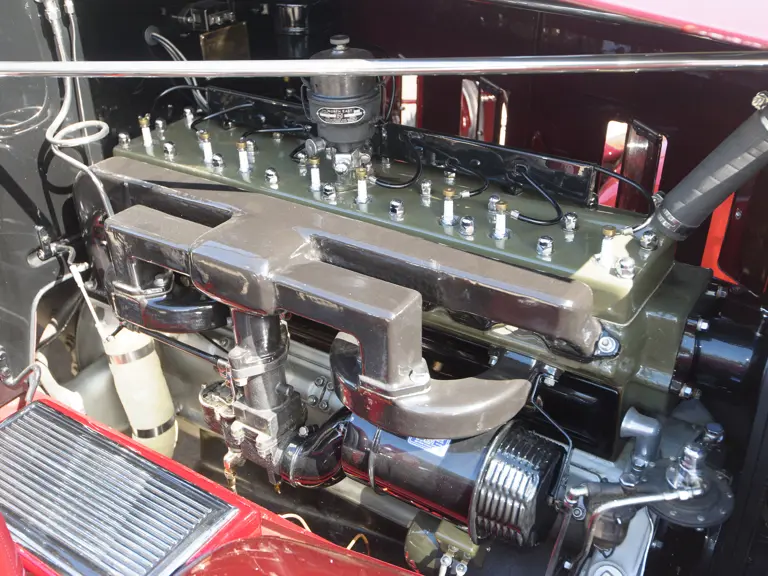
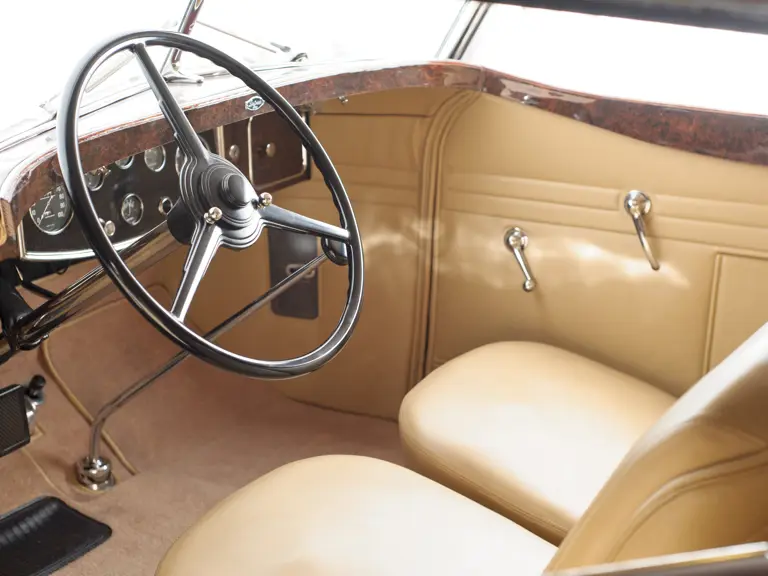
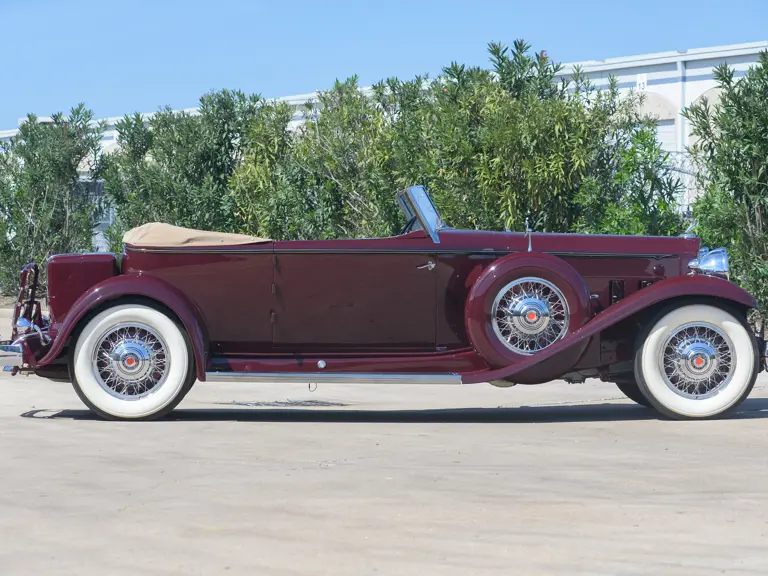
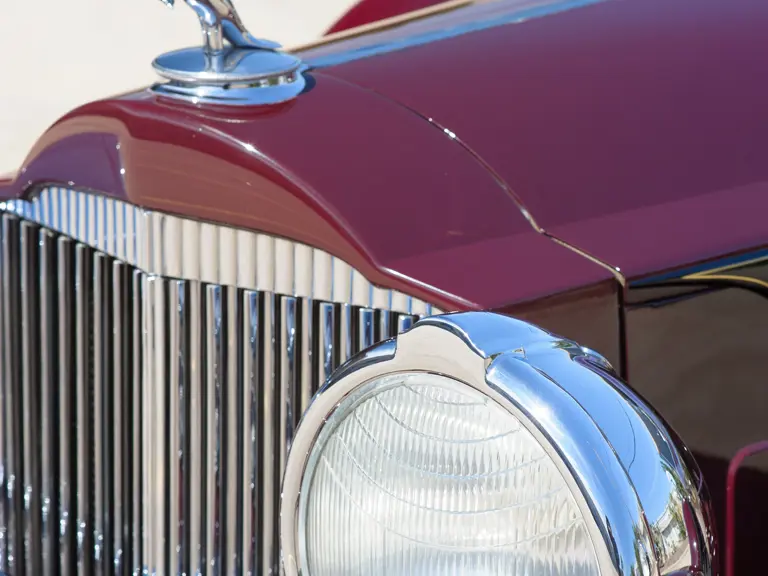


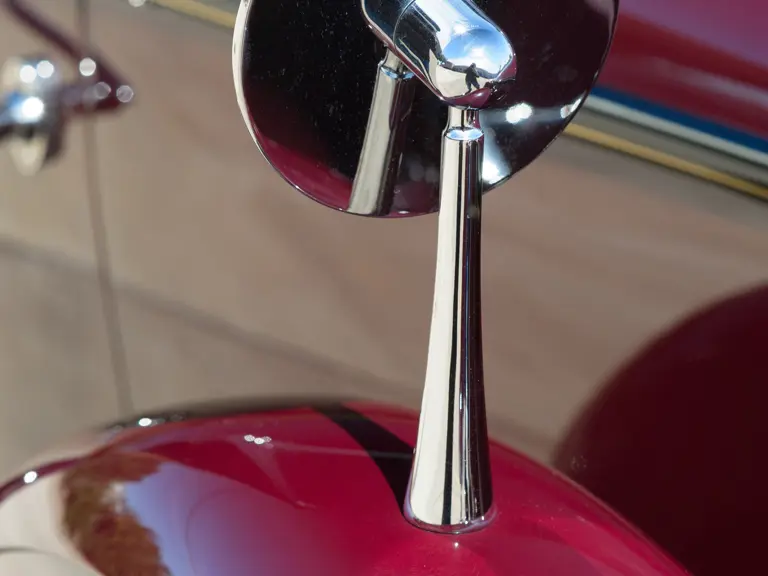
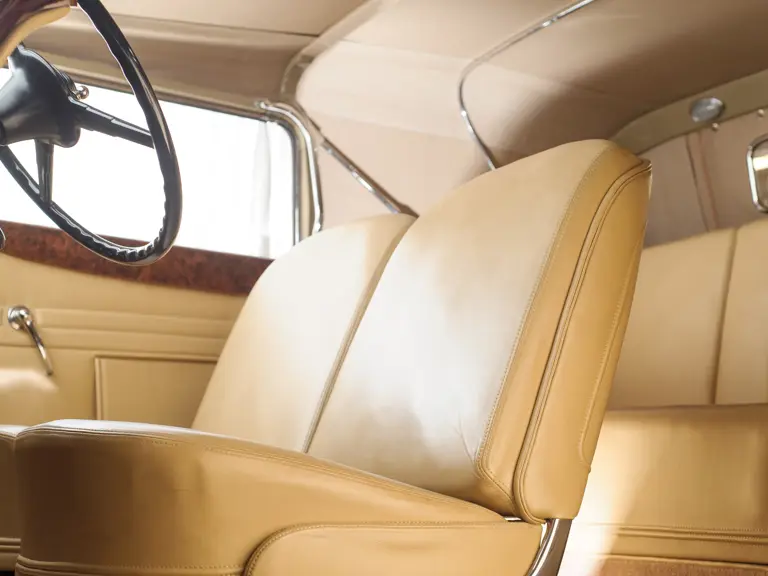
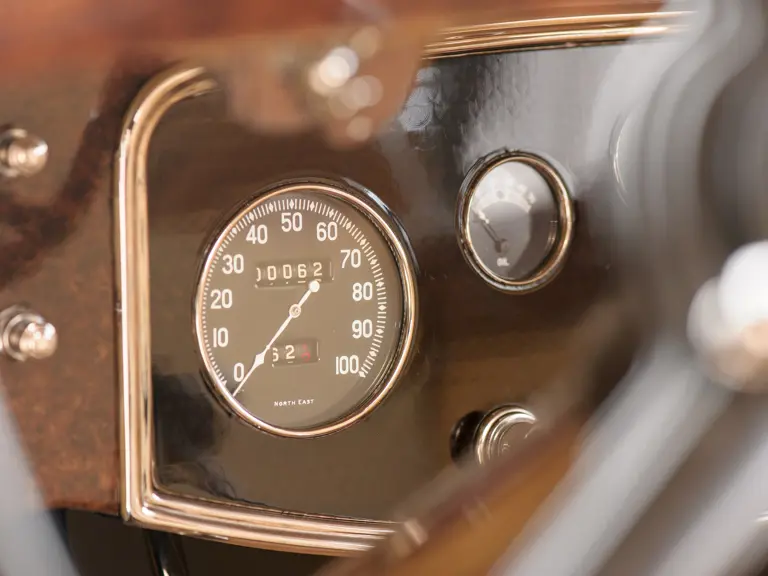
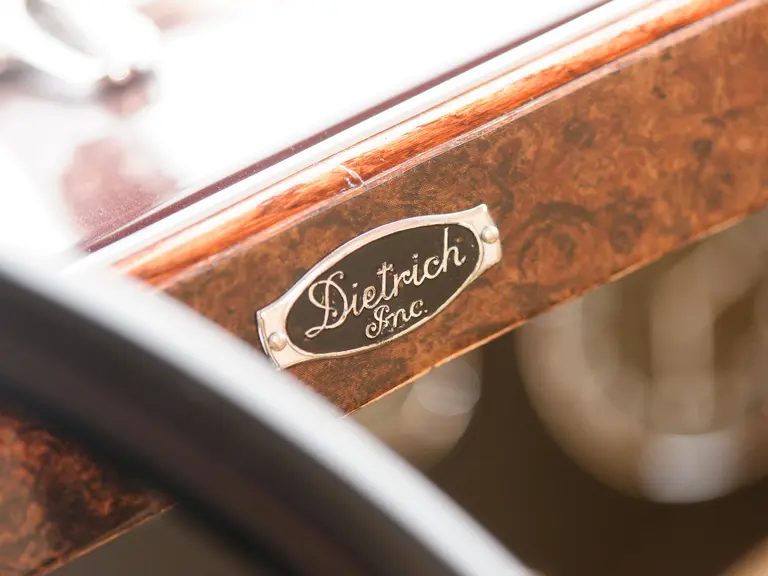

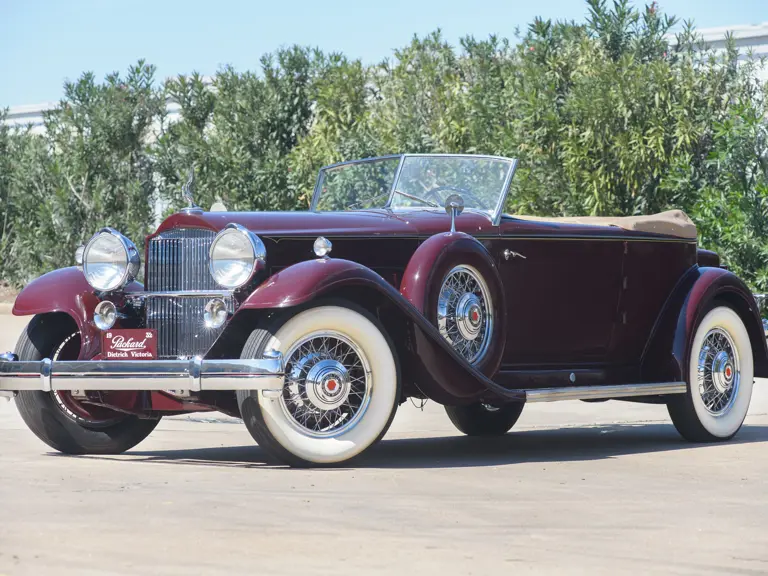
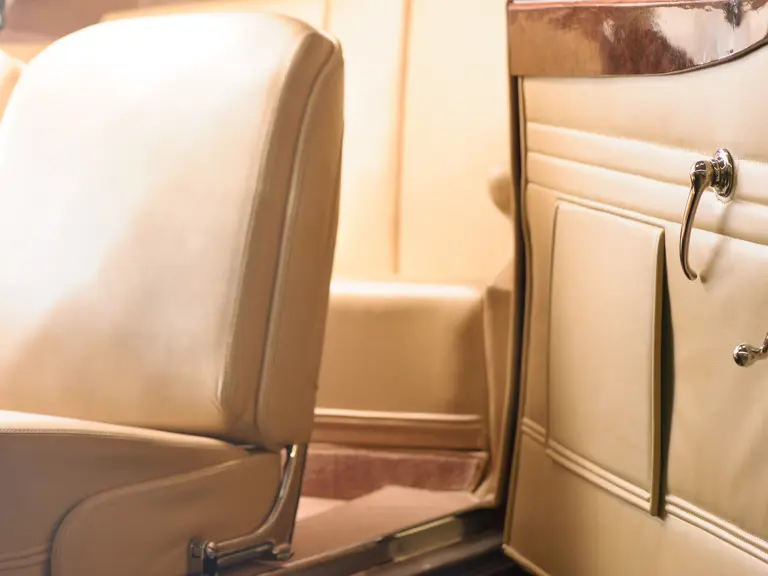
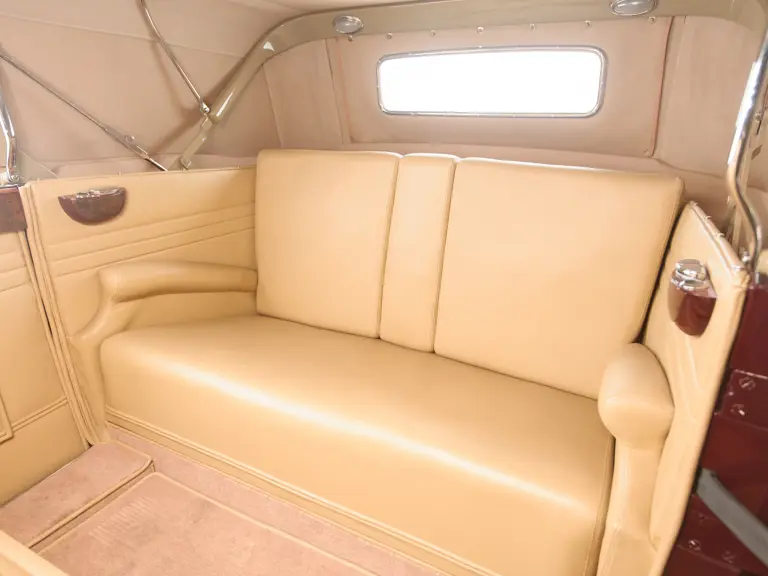


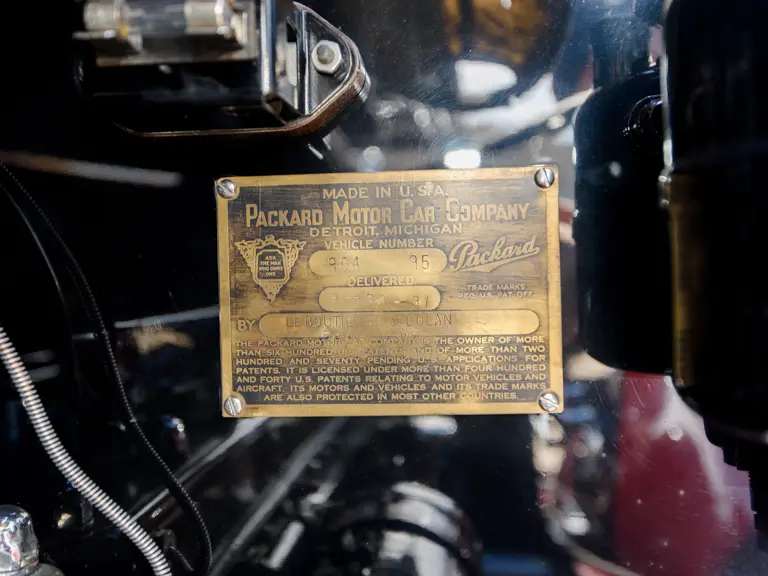
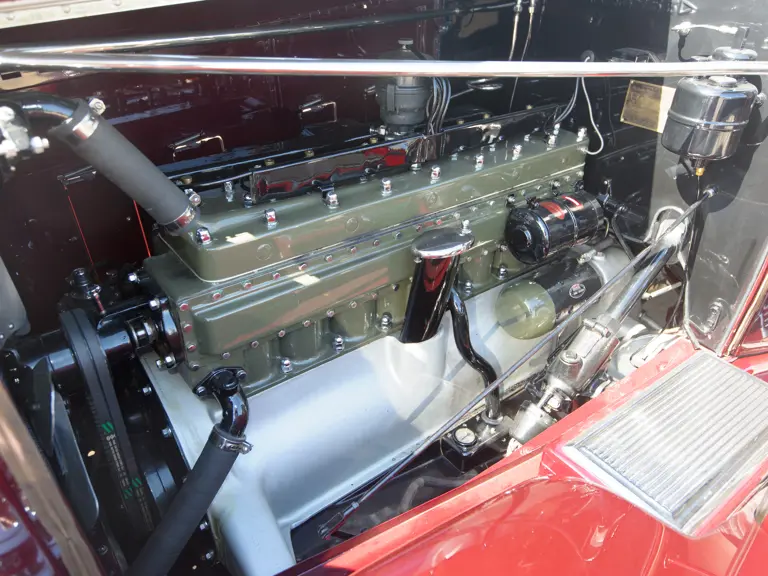
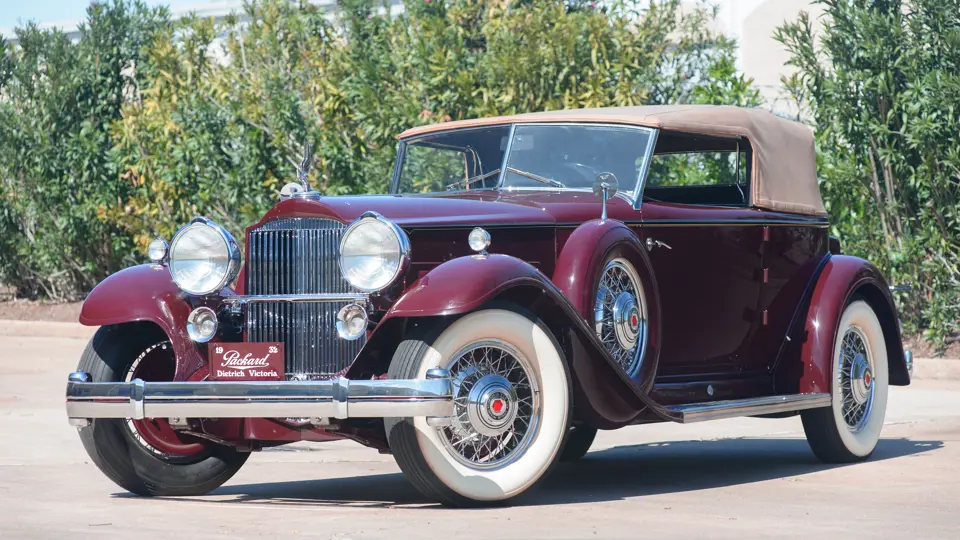
 | Plymouth, Michigan
| Plymouth, Michigan
